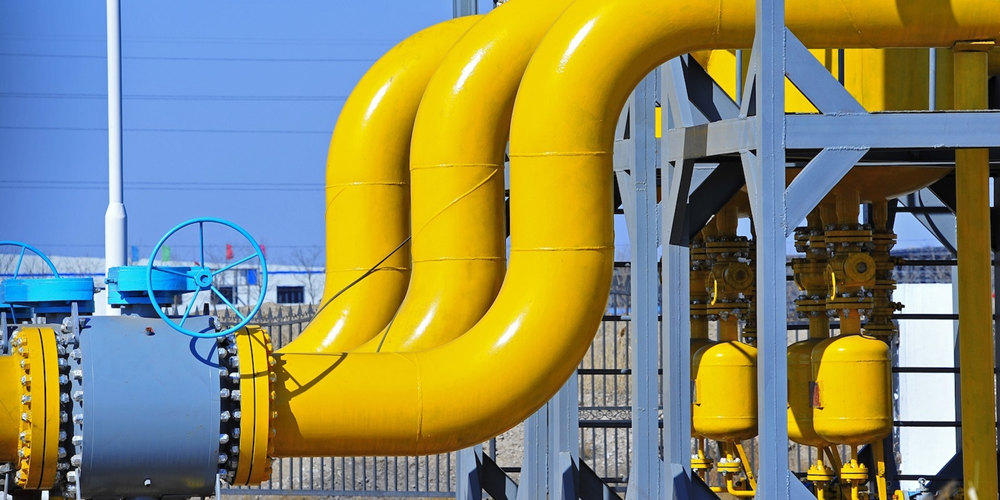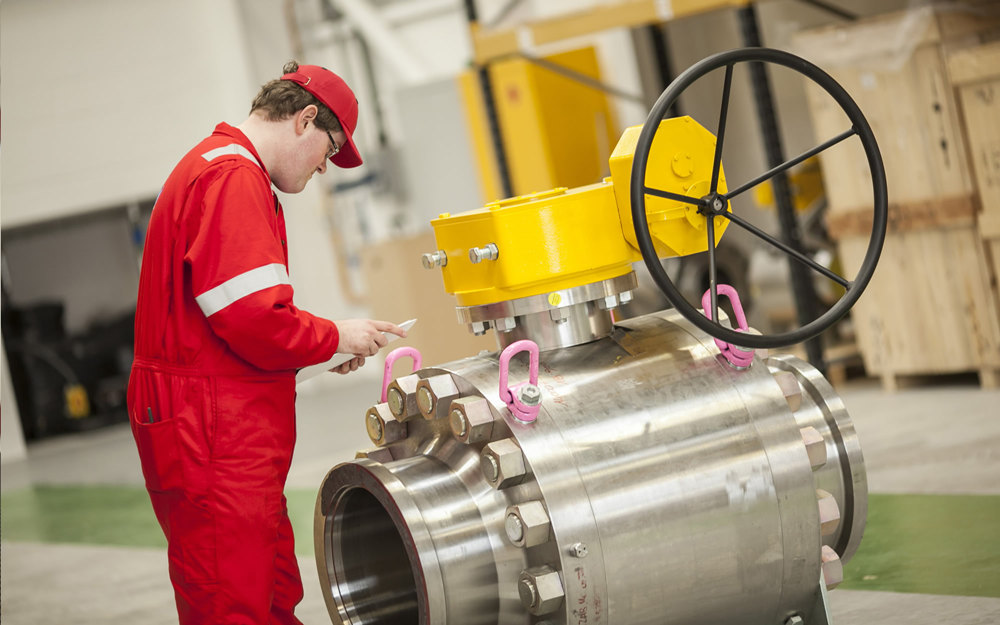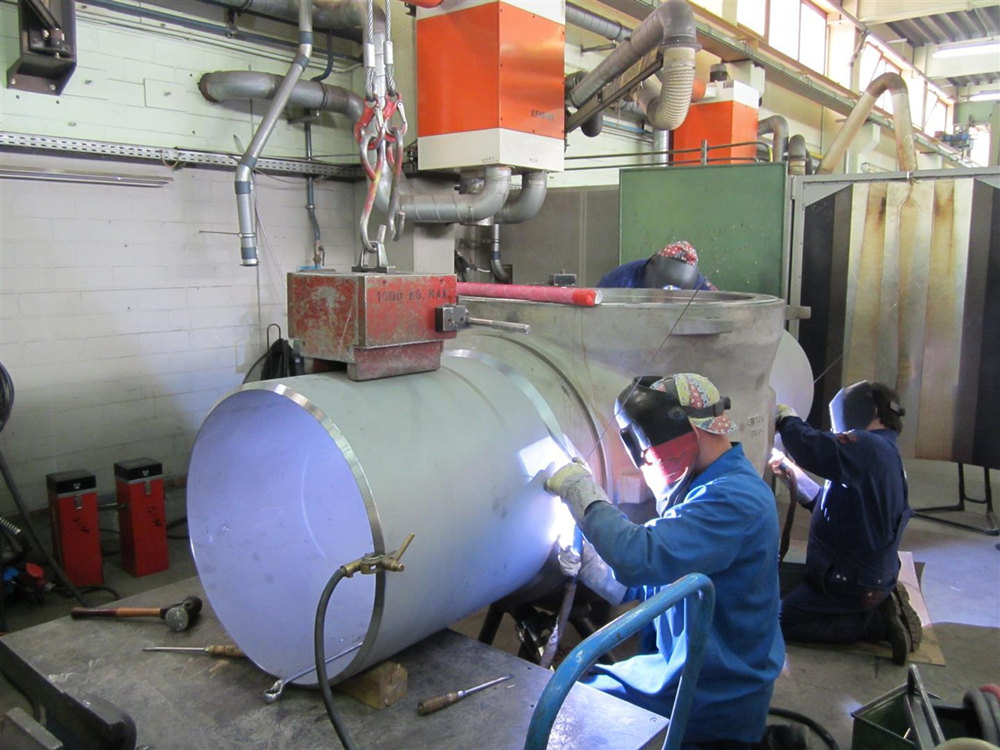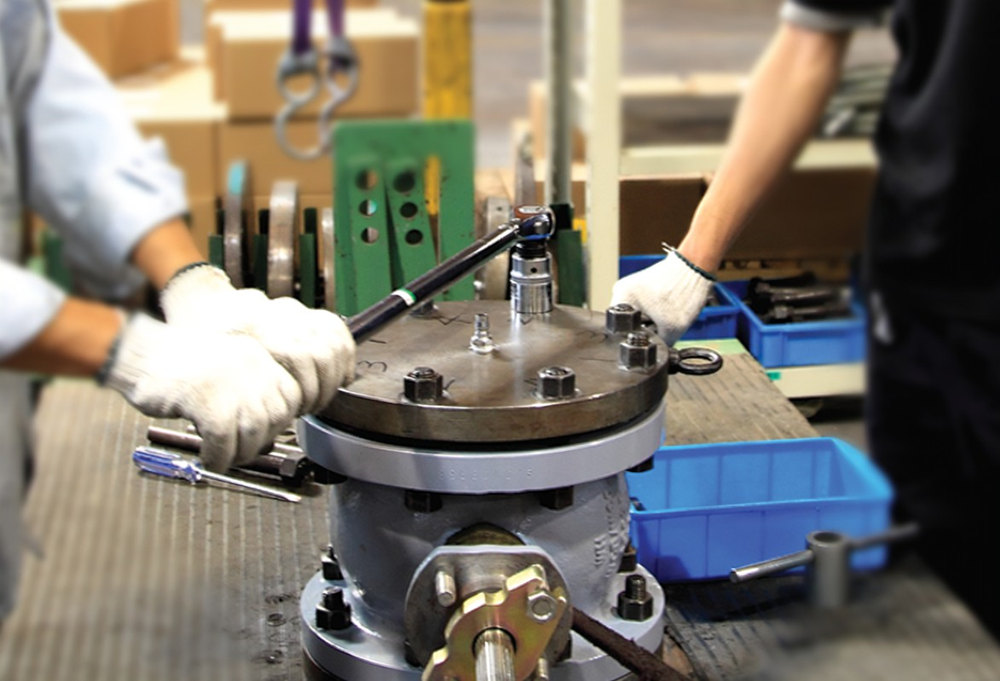Through the analysis and research on the structure principle of the fixed pipeline ball valve, it is found that the sealing principle is the same, and the ' piston effect ' principle is used, but the sealing structure is different.
The problems existing in the application of valves are mainly manifested in different degrees and different forms of leakage. According to the principle of sealing structure and the analysis of installation and construction quality, the causes of valve leakage are as follows.
(1) Valve installation construction quality is the main reason.
In the installation and construction, the protection of valve sealing surface and sealing seat ring is not paid attention to, and the sealing surface is damaged. After the installation is completed, the pipeline and valve chamber are not thoroughly and cleanly purged. In the operation, welding slag or gravel is stuck between the sphere and the sealing seat ring, resulting in sealing failure. In this case, an appropriate amount of sealant should be temporarily injected into the upstream sealing surface in an emergency to alleviate the leakage, but the problem cannot be completely solved. If necessary, the valve sealing surface and sealing seat ring should be replaced.
(2) Valve machining, sealing ring material and assembly quality reasons
Although the valve structure is simple, it is a product that requires high machining quality, and its machining quality directly affects the sealing performance. The assembly clearance and each torus area of the sealing ring and the ring seat should be accurately calculated, and the surface roughness should be appropriate. In addition, the selection of soft sealing ring material is also very important, not only to consider the corrosion resistance and wear resistance, but also to consider its elasticity and stiffness. If too soft will affect the self-cleaning ability, too hard is easy to break.
(3) Reasonable selection according to the application and working conditions
Valves with different sealing performance and sealing structure are used in different occasions. Only by selecting different valves in different occasions can the ideal application effect be obtained. Taking the West-East Gas Pipeline as an example, the fixed pipeline ball valve with two-way sealing function should be selected as far as possible ( except the track ball valve with forced sealing, because it is more expensive ). Thus, once the upstream seal is damaged, the downstream seal can still work. If absolute reliability is required, the track ball valve with forced seal should be selected.
(4)Valves with different sealing structures should be operated, maintained and serviced in different ways
For valves without leakage, a small amount of grease can be added to the valve stem and sealant injection port before and after each operation or every 6 months. Only when a leakage has occurred or cannot be completely sealed, an appropriate amount of sealant can be injected. Because the viscosity of the sealant is very large, if the sealant is added to the non-leakage valve, it will affect the self-cleaning effect of the spherical surface, which is often counterproductive, and some small gravel and other dirt are brought into the seal to cause leakage. For the valve with two-way sealing function, if the site safety conditions permit, the pressure in the valve chamber should be released to zero, which is conducive to better guarantee the sealing.
Post time: Feb-17-2023




